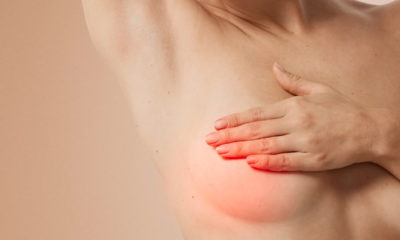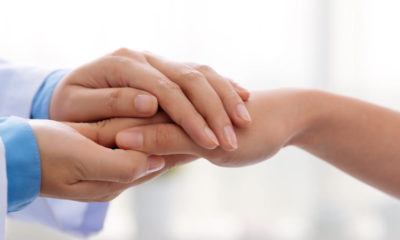This hair loss statistic might surprise most: it’s estimated that of all the people suffering hair loss, 40 percent are women. Men are not the only ones suffering, it would seem.
While the hair loss can create psychological issues for men, women can suffer even more. Board certified plastic surgeon Dr. James Namnoum discusses the issue and how modern techniques and devices are creating a relative “cure” for females suffering from hair loss.
What is the Normal Lifespan of Hair?
The average woman is born with 100,000 hair follicles on her head, which are in a constant state of change. When a follicle is first activated, it grows thick hairs for several years. When the growth cycle is complete, the follicle undergoes a transitional phase before entering into a resting period where the hair is eventually shed, and the cycle begins again. EXCEPT, when hereditary hair loss starts with a progressive shortening of the hair’s growth cycle and involves gradually shrinking hair follicles that eventually are no longer able to produce normal hair.
What are the Causes of Female Hair Loss?
Even though it’s a problem that affects one out of every five women, the thought of losing hair is one of the “worst nightmares” a woman can endure, shares Dr. Namnoum. “There is nothing more devastating.”
There are many possible causes, including underlying medical conditions, poor scalp health and hormonal changes such as menopause. Some daily hair loss is normal; on average we shed around 100 hairs a day. Medical hair loss, known as alopecia, is different and refers to a substantial loss of hair, often in a concentrated area such as the crown of the head. Thinning hair is, again, different, affecting the whole head and leading to a reduction in the number of hairs all over the scalp.
Changes in hormone levels are a common factor when it comes to hair loss. When you are menopausal, levels of oestrogen and progesterone drop, causing hair to grow more slowly and become much thinner. Women with higher levels of testosterone are also more likely to suffer from hair loss. Beyond hormones, genetics can also play an important role.
In general, hair loss falls into one of 2 categories:
- Hereditary and non-hereditary. Women with hereditary hair loss experience a general thinning of the hair, with the most extensive hair loss occurring on the top of the head and along the part. The number of women with this type of hair loss increases with age, but it can start as early as your 20’s.
- On the flipside, temporary hair loss, known as telogen effluvium, happens when stress, diet, a hormonal imbalance, or a traumatic event causes the hair follicles to remain in the resting state, causing increased hair shedding and a temporary thinning of hair across the whole scalp. While the amount of time someone stays in telogen effluvium varies, once the imbalance has been corrected, the hair will return to its previous thickness.
- A third kind of hair loss is called alopecia areata, an autoimmune disorder that is recognized by well-defined patches of hair loss, which may happen rapidly and can lead to complete hair loss.
What Can be Done?
Dr. Namnoum acknowledges that much has been accomplished toward finding a solution to female (and male) hair loss, but, at the same time, admits much still isn’t known.
“I can tell you that’s it’s an incredibly complicated process, because there are innumerable number of stems cells along the hair follicle and to say which step goes wrong is to say that we’re really at the point of understanding what the steps are in the process of making hair grow,” Dr. Namnoum told The Plastic Surgery Channel. “For many women, as they age and begin to lose their hair, it sort of starts at the top, called a ‘Christmas tree loss,’ and then spreads out peripherally from the crown of the head. Different than a man could go because their hairline is usually preserved, which is a good thing. But losing hair from the top of your head is not a good thing. It creates a lot of anxiety.”
Dr. Namnoum says the laser may come the rescue again. “We do have a low level laser therapy. You may have heard of these devices, they are almost like a crown, a helmet you wear over your head that would admit light at an infrared region,” Dr. Namnoum says. “And interestingly enough, it’s been shown to stimulate hair regrowth in both men and women independent of any chemicals or topical agents.”
Shampoo: Should She or Shouldn’t She?
It is often said that regular washing is damaging but the truth is that hair should be washed often to keep it clean and healthy. Research suggests that using products that don’t contain sodium lauryl sulphate (a common chemical found in shampoos) can help prevent hair loss. Using conditioner can also be effective but make sure you apply it to the hair strands rather than the scalp.
What’s a woman to do?
Luckily, for many of these issues, hair can grow back or the loss can be reversed with medical treatments. For the latest treatments, and to find the right one for your unique scenario, it is important to see a board certified plastic surgeon with experience. The sooner treatment is started, the better the chances are for improving your growing season.



















Facebook
Twitter
Instagram
YouTube
RSS